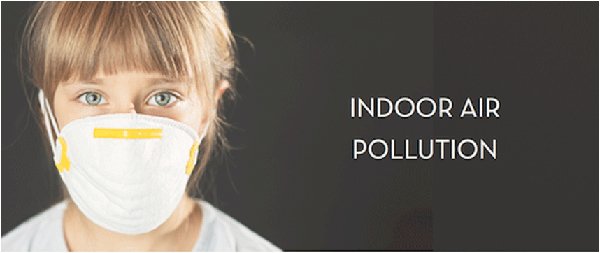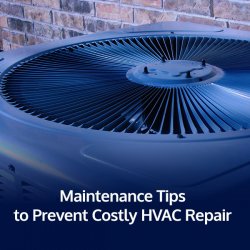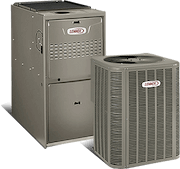Indoor air pollution is something that many people do not think about, but it should be a very real concern for any homeowner, especially owners of newer homes. The efficiency of new home construction has increased dramatically, with tighter sealing that protects the house from the elements and air leakage. However, this tighter sealing also means that indoor air pollution such as particles and moisture that are already inside your home, stay there and recirculate over and over. This can result in health issues for you and your loved ones.
Read on to learn about 7 indoor air pollution threats and what you can do to fight back.

1. Stale Air
Air can become stale and stagnant when it is not allowed to circulate properly. Additionally, moisture, allergens, mold, and other indoor air pollution can accumulate. This can lead to foul odors and a constant stuffy feeling to the room.
2. Household Chemicals
According to the EPA, household cleaners, paints, solvents, new carpet installation, and more can create invisible vapors. This indoor air pollution can cause all sorts of respiratory issues (or exacerbate existing ones) as well as irritate eyes and the throat.
3. House Odors
Many things you do in your home create smells that linger. Cooking, smoke from fireplaces, owning a pet, and more create odors that can cause respiratory issues along with nausea, headaches, and dizziness when not properly ventilated. Many people use air fresheners, but they are really only masking the odors with a new scent, and these often release indoor air pollution in the form of chemicals into the house that can cause even more problems.
4. Humidity
When talking about indoor air pollution, most people do not think about humidity. However, proper humidity regulation in the home plays a big role in your air quality and overall health.
High humidity means there is too much moisture in the air. Not only is the heavy, sticky feeling uncomfortable, but this can be bad because it creates an opportunity for mold, mildew, bacteria, and other indoor air pollutants to grow. Additionally, high humidity can damage many of your belongings that are sensitive to moisture, such as books, leather, clothing, and furniture.
Low humidity means the air is too dry. This results in irritated, dry, itchy skin that can be very painful when it starts to crack. You will notice high levels of dust starting to accumulate in your home, as well as the painful inconvenience of static shock. Low humidity can also damage furniture, wood floors, leather, and other belongings sensitive to drying out.

5. Allergens
Nature is one of the biggest and most common culprits when it comes to indoor air pollution. Dust, pollen, and pet dander can cause all sorts of issues such as coughing, sneezing, and even hives. Allergens can also exacerbate existing respiratory conditions such as asthma.
6. Bacteria, Mildew, Mold, and Germs
Areas where high moisture and food can be found are where these indoor air pollution particles thrive. They make their way between people and pets and can make you sick, cause allergic reactions, and create unpleasant odors, not to mention mold and mildew can ruin your walls and the structural integrity of the house.
7. Ozone
Everyone has heard of ozone in terms of the layer in our atmosphere that protects the earth from harmful radiation from the sun. However, it is also created by devices in your home that use electric motors, as well as some air purifiers. This form of indoor air pollution can cause respiratory issues such as shortness of breath, coughing, and chest pains. You may develop chronic health issues from continuous or repeated exposure to ozone.
What You Can Do to Combat Indoor Air Pollution
- Disposable Air Filters: Disposable air filters trap unwanted particles and other indoor air pollution, allowing clean air to circulate freely throughout your home. When it is time to change them, you simply remove the filter and throw it into the trash.
- Electrostatic Filters: A step up from disposable air filters, electrostatic filters use an electric charge instead of paper to trap indoor air pollution. By giving unwanted particles a positive or electric charge, they are made to stick to metal plates found inside of the filter. This allows the trapping of particles that would normally be too small for a traditional disposable air filter.
- Humidifiers and Dehumidifiers: Humidifiers and dehumidifiers will keep your indoor humidity at just the right levels to prevent dry itchy skin as well as mold and mildew. The result will be a healthier, more comfortable home.
Learn More About Preventing Indoor Air Pollution
If you are looking for the best solutions to prevent and eliminate indoor air pollution, contact the experts at Galmiche & Sons. Our heating & air conditioning technicians can get you set up with everything you need for the cleanest indoor air possible.









